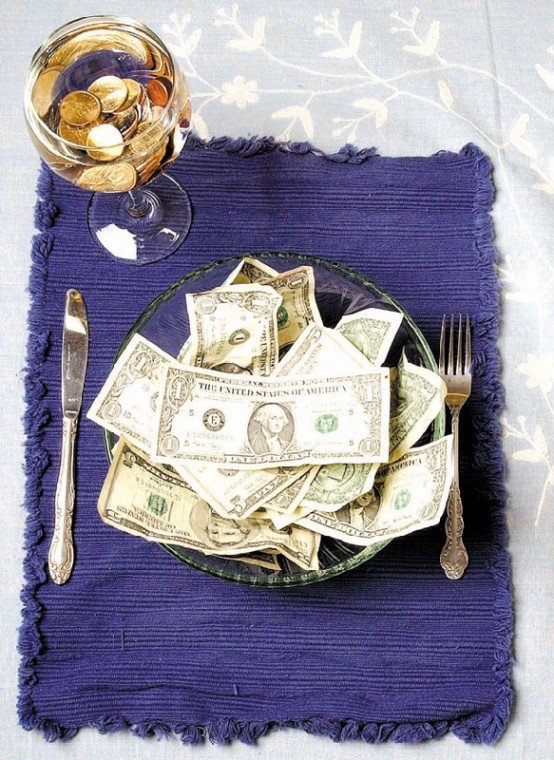Simple dietary improvements, from switching to whole grain bread
instead of white to picking low-fat meats and cheeses over regular
selections, may not be hard, but it is expensive
– a minimum of $1,000 more per year for a family of four,
according to a new study by the University of California,
Davis.
Simple dietary improvements, from switching to whole grain bread instead of white to picking low-fat meats and cheeses over regular selections, may not be hard, but it is expensive – a minimum of $1,000 more per year for a family of four, according to a new study by the University of California, Davis.
The cost leap may not seem too big for most middle-income residents of the state, but for families struggling to make ends meet – low-income parents with children – such a dollar amount represents a 30 to 40 percent jump in food spending.
“We were not surprised to discover that
people would need to spend almost a $1,000 more per year to feed their families a more nutritious diet than if they were to simply buy the cheapest foods,” said Karen Jetter, a research economist at the UC Agricultural Issues Center and one of the study’s authors, in a statement released with the study. “This confirms the belief that cost may be one barrier to healthier eating.”
Study participants in Sacramento and Los Angeles shopped by lowest unit price for the items listed in the United States Department of Agriculture’s Thrifty Food Plan market basket, a low-cost meal plan developed by the department to show that even low-wage earners can meet minimum food pyramid guidelines.
The same participants shopped for similar items with a healthy substitute list developed by Diana Cassady, director of the UC Davis Center for Advanced Studies in Nutrition and Social Marketing and one of the study’s co-authors.
Cassady’s list of substitutions covered healthier alternatives for items like dairy, meats, canned fruit, fats, breads and grain products. It called for 100 percent whole grain breads, whole-wheat pastas and items like canned fruit in light syrup instead of heavy syrup.
Shoppers looked for the items in summer 2003, fall 2004 and spring 2004 in a combination of chain and local independent grocery stores to balance out seasonal factors, but still found the healthier market basket to be significantly more expensive, averaging $230 for a two-week food supply versus $194 for the TFP basket.
Moreover, many stores never carried some of the items called for in the healthy substitutes category: high-fiber hamburger buns, unbreaded frozen fish filets and low fat cheddar cheese, to name a few.
The per-unit price of many health foods is higher, according to industry experts, because the dollar value of ingredients in healthier foods is generally higher, according to Todd Hultquist, a spokesman for the Food Marketing Institute, an industry group for food suppliers.
“If you’re talking about the cost of things like ground meats, generally, (the cost of low-fat ground is more) because there’s more premium beef in that ground beef,” said Hultquist. “Whereas the 80 percent has more fat content, the 90 percent is going to have more, meat and it may have more sirloin mixed in instead of the fattier cuts.”
Still, for most consumers, Hultquist doesn’t buy the argument of expense. Demand for low-fat and whole grain products has remained high, with more than 60 percent of consumers purchasing products based on labeling claims of low fat or whole grain, according to data collected for “Shopping for Health 2004,” a joint survey conducted by the Food Marketing Institute and Prevention magazine.
And as more and more organic farmers have begun to populate the nation, people have greater access to organic goods whose prices have been driven down by competition, according to Hultquist.
“Take organic foods for one thing,” Hultquist said. “In the produce section they used to be kept separately, and they were almost always at least 10 if not 20 percent more expensive, but now they’re right out on the same shelf for about the same price.”
Big companies are also rolling out organic and low-fat lines, said Hultquist, from Frito Lay’s natural line to others that tout themselves as low fat or low in transfat to organic.
Unfortunately, for those shopping merely by the lowest price, health items still remain more expensive because fewer items of this nature are available in bulk.
While large tins of fruit in heavy syrup are available, and nearly every store carries its own brand of white bread, not a single store in the survey carried a store brand of whole wheat bread and none carried a bulk size of fruit in light syrup, either.
Other items, like brown rice and whole-wheat flour, could not be found in the same bulk sizes as their white grain counterparts.
“One message I think (the study) really sends is it is more expensive to eat healthier, and for most households it’s not going to be unattainable, but for low-income households it is going to be difficult,” said Jetter in a phone interview. “Maybe this can open up a dialogue into developing policies to overcome that challenge.”
One way to do so, said Jetter, would be to offer some form of incentive for low-income families, particularly those on food stamps, to buy healthy.
A study written up in the 2004 Farm Bill did look at a program in this vein, where buyers of healthy foods would get a bonus in their food stamps to cover the difference, according to Jetter, but no incentive program is currently on the books according to Gene Barbour, an eligibility benefits supervisor for the Santa Clara County department of social services.
“It’s your basic needs-based program,” said Barbour. “Families and individuals are eligible based on the amount of income that comes into the household. How they spend those on particular food items is up to the individual family.”
The program provides enough for a family to eat sensibly, according to Barbour.
And studies show that, in most cases, the biggest block to healthier eating may have nothing to do with money after all. Americans increasingly report confusion over different diet styles, according to the “Shopping for Health 2004” report, and industry insiders are quietly pushing for grocers to begin offering more in the way of consumer education.
Raley’s and Nob Hill stores have begun experimenting with the idea of hosting nutrition workshops, according to company spokeswoman Jennifer Ortiz. Attendance has been steadily growing at facilities that offer such programs, and the company is considering expanding the number of training centers they operate, but none exists yet near the South Valley, she said.
Foods purchased for the Thrifty Food Plan and healthy market basket comparison
Food item – Thrifty Food Plan – Healthier
Breads – Enriched – 100 percent whole wheat
Canned peaches – In heavy & in lite syrup – In lite syrup
Canned pears – In heavy syrup – In lite syrup
Cheese – Whole fat – Low-fat
Chicken – With skin – Skinless
Cold cereal – Corn flakes – Bran flakes
Cooking oil – Vegetable – Canola
Egg noodles – Whole egg – Yokeless
Evaporated milk – Whole – Low-fat
Flour – White – Whole wheat
Frozen French fries – Frozen French fries – Potatoes
Frozen fish – Filets, breaded – Filets, unbreaded
Ground meat – Lean – Lowest fat
Milk – Whole, 1 percent – Nonfat, 1 percent
Rice – White – Brown
Salad dressing – Regular – Low-fat
Spaghetti – Enriched – 100 percent whole wheat
Spreads – Margarine – “Healthy” spread
Tuna fish – Light – Albacore















